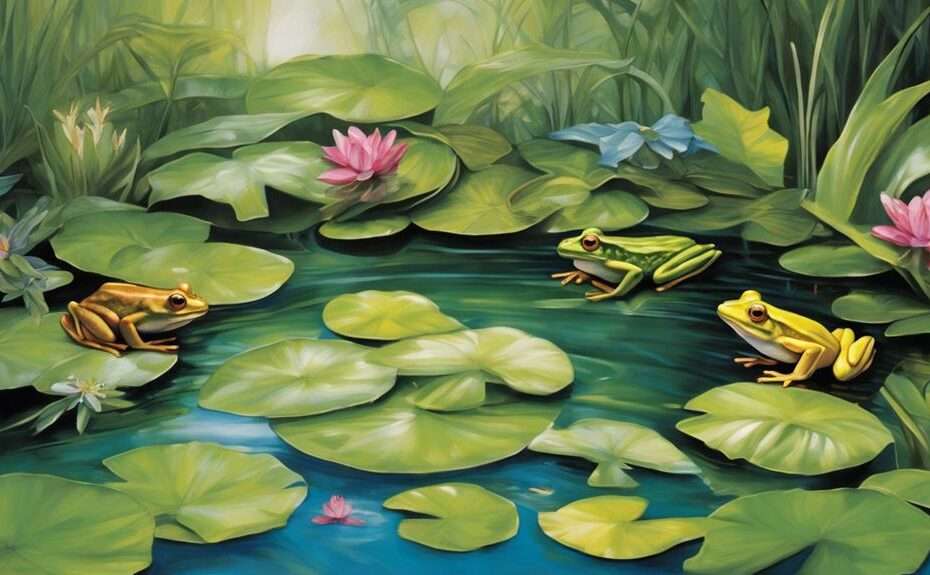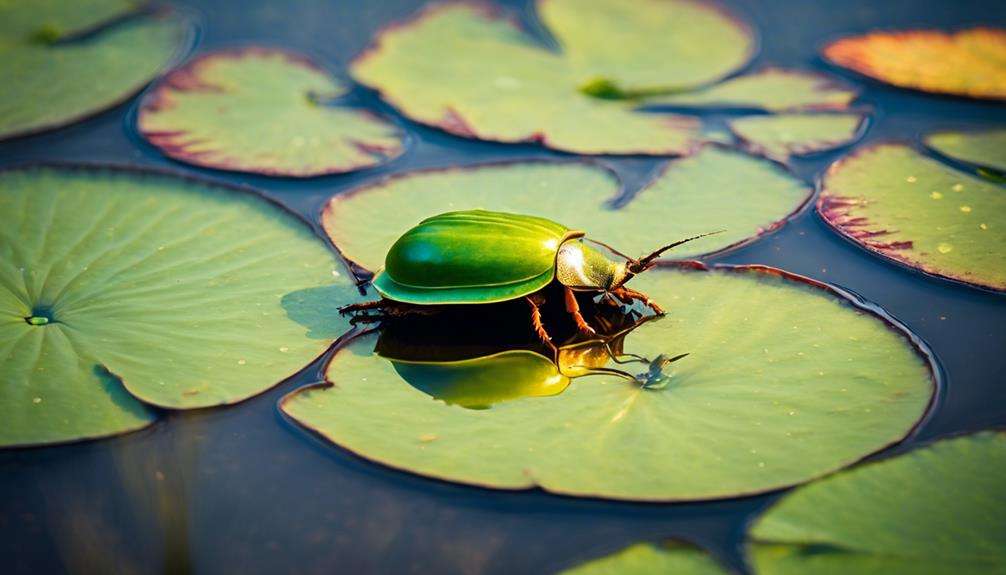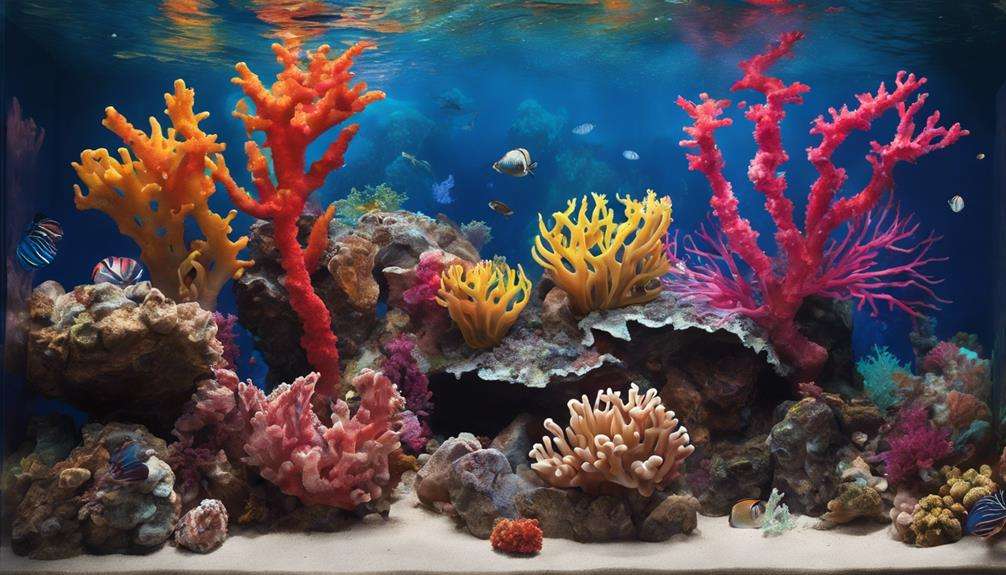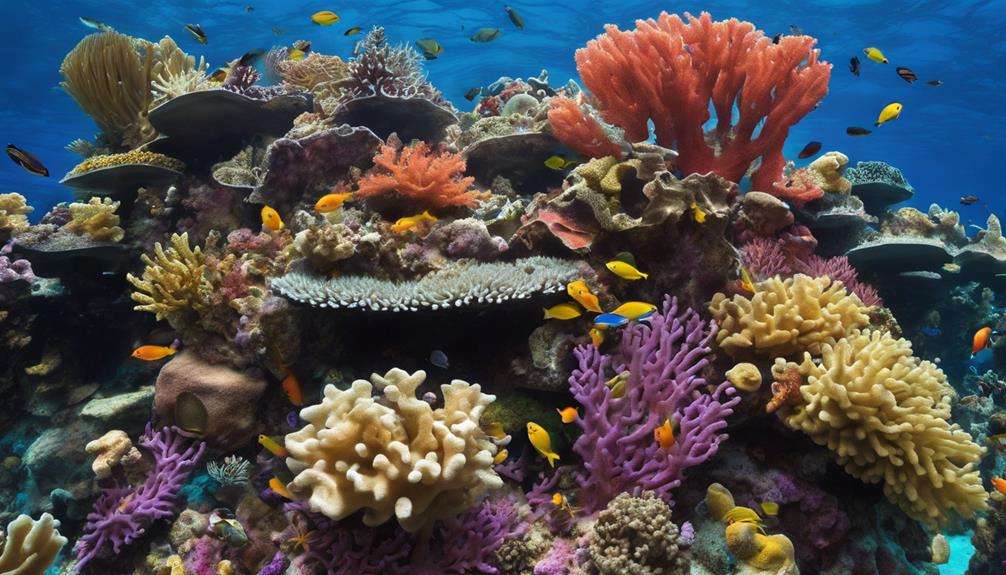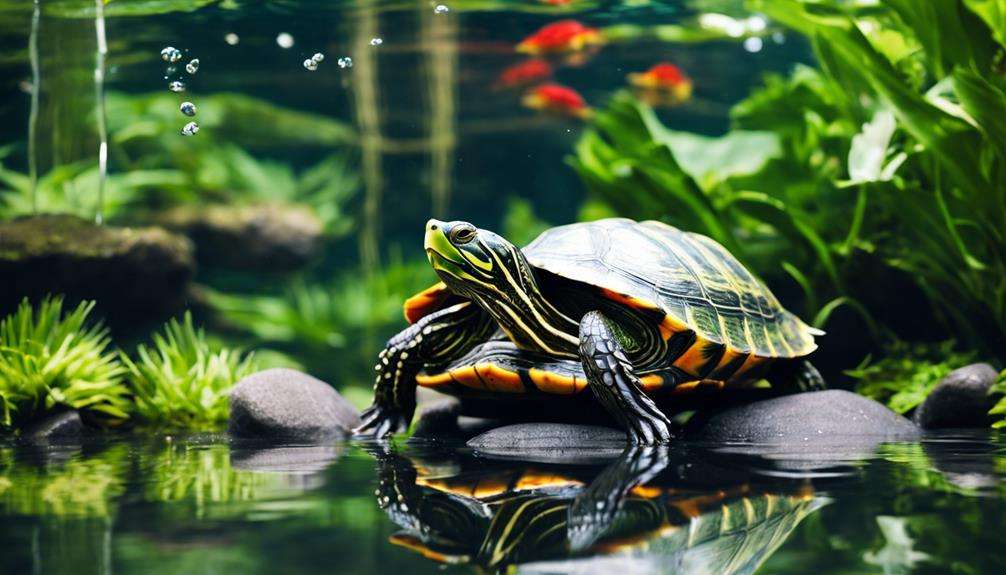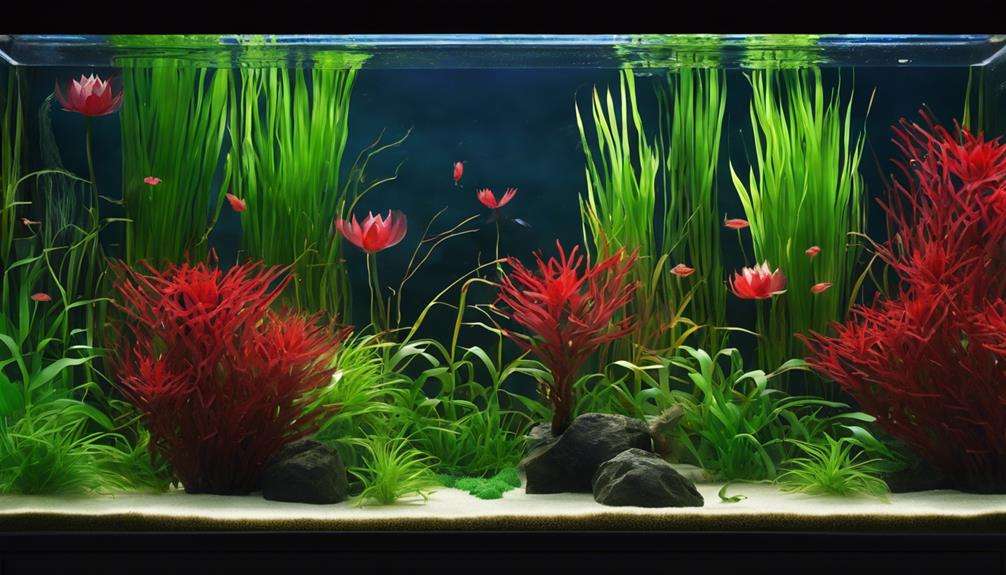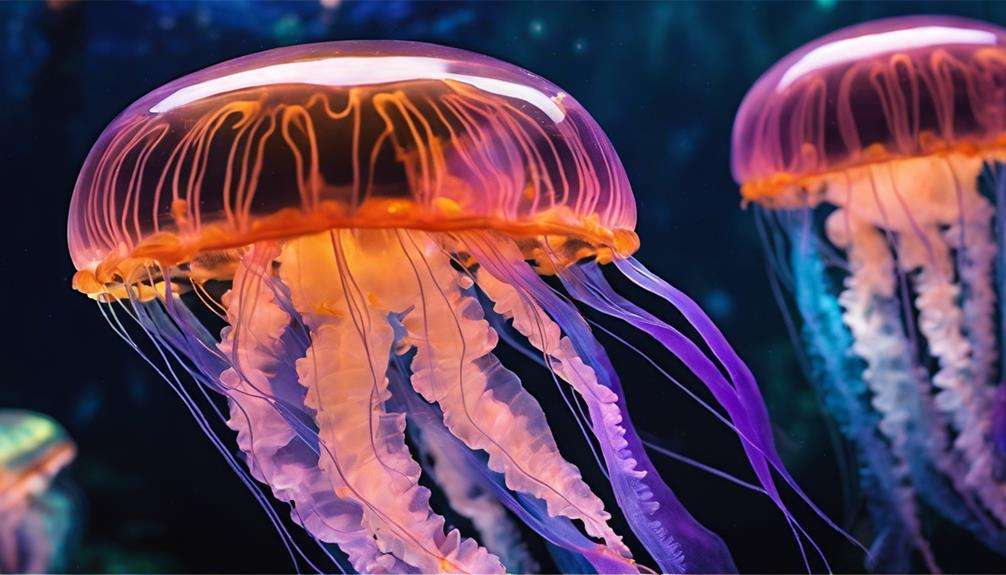You might not realize that aquatic frogs are excellent for indoor ponds because of their unique ability to help maintain a balanced ecosystem.
Their presence goes beyond mere aesthetics; these frogs play an important role in keeping the pond clean and algae-free.
Their natural behavior and diet contribute to the overall health of the pond, making them an essential addition to any indoor aquatic environment.
Want to learn more about the fascinating ways aquatic frogs benefit indoor ponds?
Key Takeaways
- Aquatic frogs help maintain ecological balance in indoor ponds.
- They contribute to natural pest control and control insect populations.
- Aquatic frogs support biodiversity and ecosystem harmony.
- Proper habitat and water quality maintenance are crucial for the well-being of aquatic frogs.
Benefits of Aquatic Frogs in Indoor Ponds
Aquatic frogs in indoor ponds play a crucial role in maintaining ecological balance and promoting a natural pest control system through their diverse feeding habits and interactions within the pond ecosystem. By feeding on pests like mosquitoes and flies, these frogs help control insect populations, contributing to the overall pond ecosystem balance.
Additionally, their consumption of algae assists in maintaining water quality, creating a healthier environment without the need for harmful chemicals. The presence of aquatic frogs not only adds aesthetic appeal to indoor ponds but also supports biodiversity by fostering a harmonious ecosystem.
Through their interactions with other pond inhabitants, these frogs enhance the pond's sustainability, making them valuable assets in promoting a thriving and balanced pond ecosystem. Overall, the benefits of having aquatic frogs in indoor ponds extend beyond pest control to encompass the preservation of water quality, ecosystem balance, and biodiversity, resulting in a more sustainable and vibrant pond environment.
Ideal Habitat for Aquatic Frogs
In crafting a perfect environment for aquatic frogs, the habitat within indoor ponds must cater to their specific requirements for water depth and controlled conditions to guarantee their well-being and adaptation. Aquatic frogs are best suited to indoor ponds that offer shallow water, replicating their natural habitats. These ponds should be filled with fresh, non-chlorinated water to provide a suitable environment for the frogs' aquatic lifestyle.
To enhance the habitat, incorporating live plants like Elodea can create a more natural and comfortable space for the frogs. Since aquatic frogs spend their entire lives underwater, maintaining the right temperature range and water quality is essential in indoor ponds. By ensuring a controlled environment with the right water conditions, indoor ponds become the ideal setting for the health and happiness of aquatic frogs.
Providing a habitat that meets these specific needs is essential for the well-being and longevity of these fascinating amphibians in indoor settings.
Maintenance Tips for Aquatic Frog Ponds
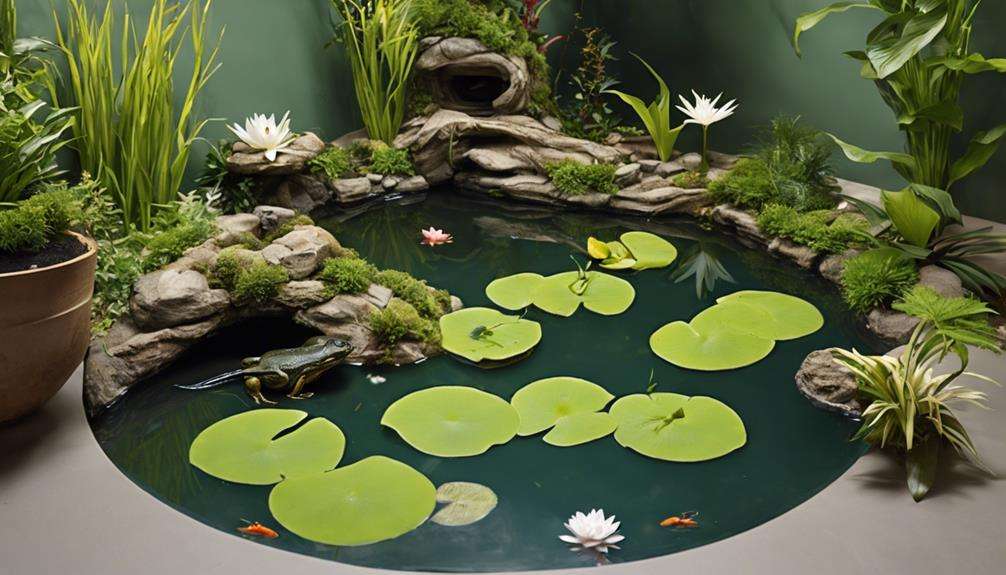
To guarantee the top health of your aquatic frogs, it's essential to regularly test and regulate water quality parameters like pH, ammonia, and nitrate levels in your pond.
Clean out debris and waste from the pond frequently to prevent water contamination and maintain a healthy environment for your frogs.
Monitoring the frogs' health for any signs of illness or stress, such as lethargy or loss of appetite, is vital for their well-being.
Feeding Aquatic Frogs
Regularly maintaining a clean feeding area and changing the water in the shallow dish is crucial for ensuring the hygiene and health of your aquatic frogs in indoor ponds. To provide a well-rounded diet for your aquatic frogs, offer a mix of frog food pellets, frozen or freeze-dried brine shrimp, bloodworms, and tubifex worms as occasional treats. Avoid overfeeding and supplement their diet with live black worms for essential nutrients. Establish a feeding schedule with pellets in the morning and evening to meet their nutritional needs.
Additionally, consider a 12-hour photoperiod in the indoor pond to support live plants like Elodea, creating a natural ecosystem and enhancing the habitat for your aquatic frogs.
Water Quality Control
Maintaining ideal water quality in your aquatic frog pond involves frequent testing of key parameters like pH, ammonia, nitrites, and nitrates to guarantee a healthy habitat for your amphibian friends.
Regularly check and adjust these water parameters to guarantee they fall within the suitable range for aquatic frogs.
Perform partial water changes of about 25-50% every 1-2 weeks to eliminate accumulated toxins and maintain water quality.
Utilize a reliable filtration system to remove waste and debris, keeping the water clean and clear.
Monitor oxygen levels closely to provide a well-oxygenated environment for your aquatic frogs.
Control algae growth by managing nutrient levels and guaranteeing adequate light for plant growth.
Compatibility With Other Indoor Pets
Aquatic frogs are known for their peaceful interactions with other small aquatic pets in indoor environments. Understanding their compatibility with different species can help create a harmonious living environment for your pets.
Consider factors like feeding habits and space requirements when introducing aquatic frogs to your indoor pond community.
Pet Interaction
When considering the compatibility of African dwarf frogs with other indoor pets in an aquatic environment, their peaceful nature and small size make them ideal tank mates. These frogs coexist harmoniously with small fish in indoor ponds, creating a serene and balanced ecosystem.
Their non-aggressive behavior guarantees they pose no threat to other aquatic species such as fish or shrimp. Due to their small size, African dwarf frogs are suitable companions for various indoor pets, enhancing the overall pet interaction experience in shared habitats.
Their calm demeanor and compatibility with different aquatic species make them well-suited for indoor ponds with diverse pet interactions, promoting a tranquil and enjoyable environment for all residents.
Living Environment
In shared indoor pond environments, the compatibility of African dwarf frogs with other pets is characterized by their peaceful nature and ability to coexist harmoniously with small fish, enhancing the overall living environment.
Aquatic frogs are known to live peacefully alongside small fish, creating a harmonious coexistence that adds to the diversity of the aquatic ecosystem. Their crucial behavior and adaptability make them compatible companions in indoor ponds.
The presence of aquatic frogs not only contributes to the visual appeal of the tank but also plays a critical role in maintaining a balanced and thriving aquatic community. This harmonious relationship between frogs and small fish fosters a dynamic and diverse living environment within indoor ponds.
Feeding and Diet of Aquatic Frogs
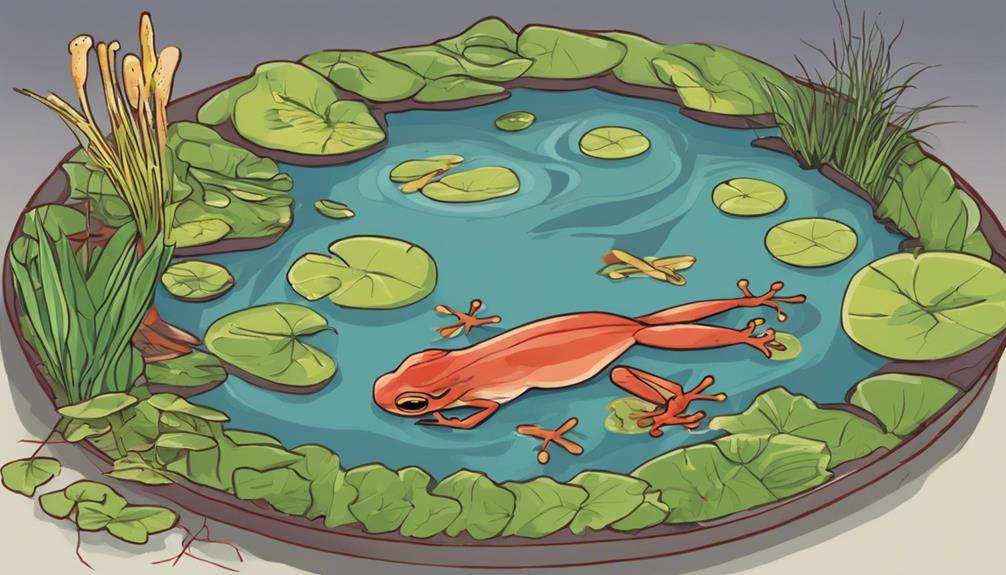
For a well-rounded diet, aquatic frogs primarily consume frog food pellets, supplemented with occasional treats like frozen or freeze-dried brine shrimp, bloodworms, and tubifex worms. Live black worms can also serve as a continuous food source for these amphibians. To guarantee a balanced diet, it's recommended to feed aquatic frogs pellets once in the morning and once at night.
Additionally, maintaining a 12-hour photoperiod in the tank is essential for both plant health and the overall well-being of the aquatic frogs. This light-dark cycle mimics their natural habitat and supports their physiological processes. Frog food pellets are specially formulated to meet the nutritional needs of aquatic frogs, providing essential vitamins and minerals. Treats like brine shrimp and bloodworms add variety and can be offered sparingly to supplement their diet.
Common Misconceptions About Aquatic Frogs
Misconceptions surrounding aquatic frogs often stem from their unique amphibious nature and specific habitat requirements. One common misconception is that aquatic frogs can survive on land for extended periods, similar to terrestrial frogs. In reality, aquatic frogs are fully dependent on water to live as they breathe through their skin and require a moist environment to prevent dehydration.
Additionally, there's a misconception that different frog species, whether aquatic or terrestrial, can coexist in the same habitat. Aquatic frogs have distinct habitat needs and shouldn't be housed with terrestrial frogs.
Another prevalent misconception is that aquatic frogs can adapt to living in dry environments. This is false, as aquatic frogs need a consistently moist habitat to thrive. Moreover, some believe that aquatic frogs don't require specific temperature conditions in their habitat. In truth, temperature plays a critical role in the health and well-being of aquatic frogs, and maintaining an appropriate temperature range is essential for their overall care and longevity.
Frequently Asked Questions
Why Are Frogs Good for Ponds?
Frogs contribute to pond ecosystems by controlling insects, eating algae, and indicating water quality. Their presence improves pond aesthetics and offers educational opportunities. Understanding frog behavior, diet, and habitat requirements is essential for maintaining healthy ponds.
Can Aquatic Frogs Live in a Pond?
Aquatic frogs thrive in ponds, needing a water source to survive. They prefer shallow waters with plants, enhancing their habitat. They coexist with fish, maintaining harmony. Guarantee good water quality and hiding spots for their well-being.
Why Do Frogs Prefer to Live Near Ponds Instead of Rivers?
In pond ecosystems, frogs choose still waters over rivers due to safety from predators, ideal breeding conditions, diverse food sources, and vegetation for shelter. These adaptations guarantee their survival, highlighting the importance of wetlands for frog populations.
What Are the Best Conditions for Frogs in a Pond?
To provide the best conditions for frogs in a pond, you must regulate temperature, maintain water quality, offer diverse food sources, provide shelter options, minimize predation risks, understand the reproduction cycle, consider plant interactions, and observe behavioral adaptations.
Conclusion
To sum up, aquatic frogs are the perfect choice for indoor ponds due to their adaptability, peaceful nature, and specific temperature requirements. They provide a harmonious ecosystem with other aquatic creatures, making them ideal tank mates.
By following proper maintenance tips and feeding them a suitable diet, aquatic frogs can thrive in indoor settings. So, next time you're setting up an indoor pond, consider adding these fascinating creatures to create a balanced and mesmerizing aquatic environment.
